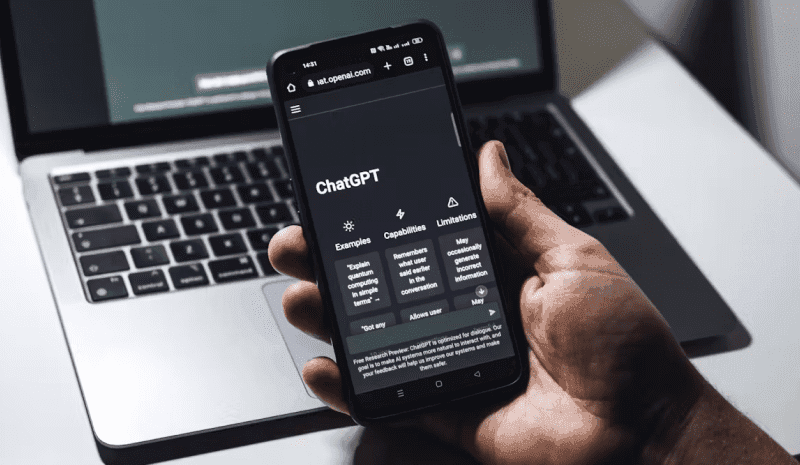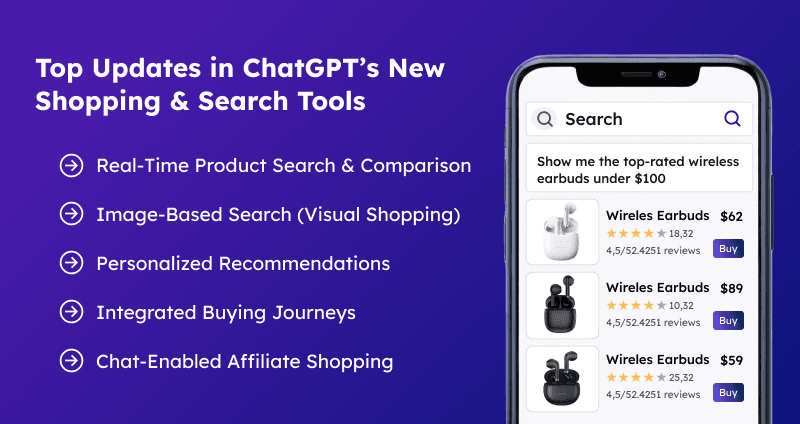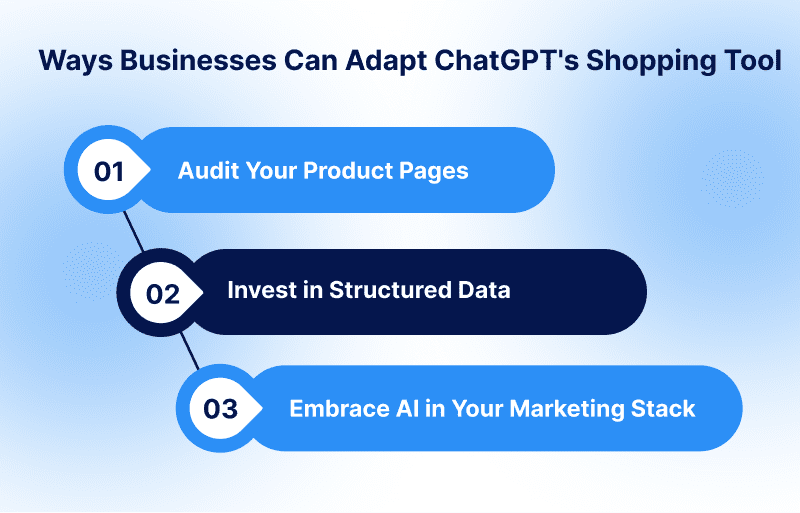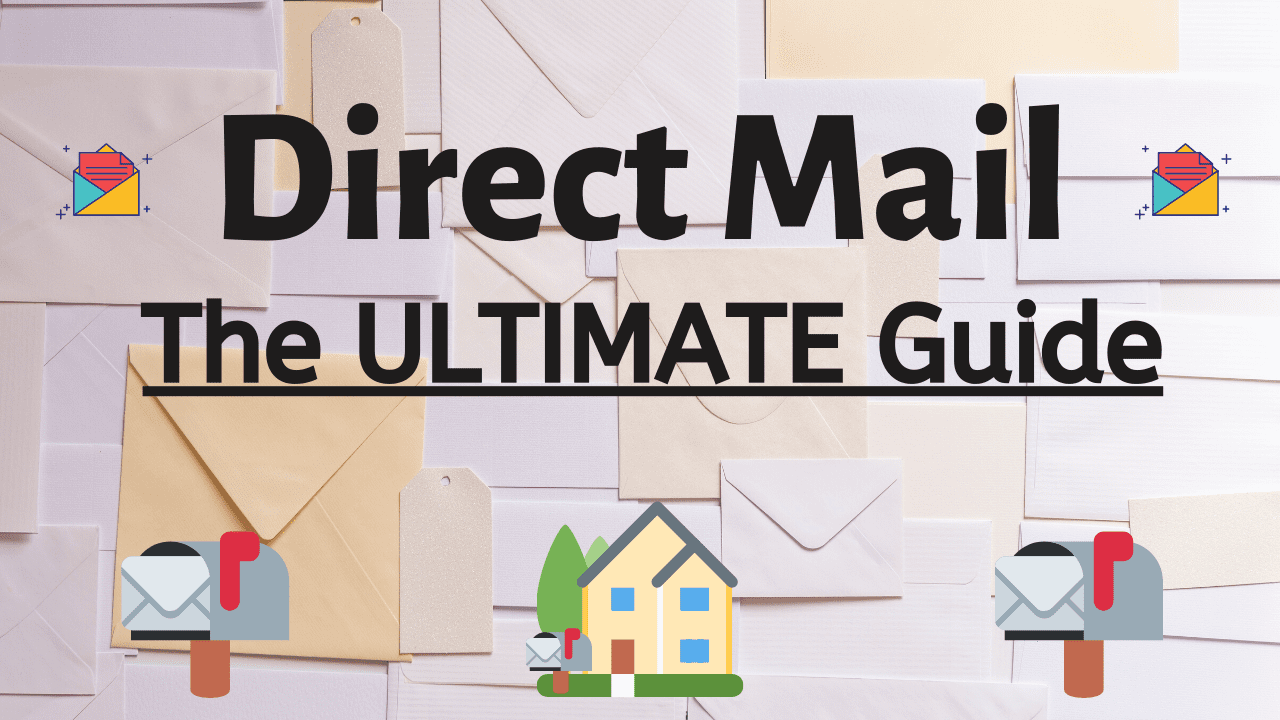
Keeping up with OpenAI’s new features can feel like chasing a bullet train. But if you’re a business owner, marketer, or anyone selling online, you’ll want to stop and take notice of this:
ChatGPT just got a significant upgrade with new shopping and search tools, and it could totally change the future of online shopping, and how customers find, compare, and buy from brands like yours.
We’re going to break down what ChatGPT shopping tools are, how they work, and most importantly, how they can give your business a competitive edge in 2025 and beyond.
What’s New With ChatGPT?
In case you haven’t heard, ChatGPT (powered by OpenAI) has rolled out some game-changing shopping and search capabilities, especially with its Pro plan that gives users access to GPT-4-turbo. These features of ChatGPT go beyond just asking a few casual questions. You can now:
- Search and compare products across real-time web results
- Use visual shopping with images and product snapshots
- Chat your way through purchase decisions
- Get personalized product suggestions based on real needs
Why Businesses Should Care?
Let’s put it this way: if you run an eCommerce store or offer products online and you’re not thinking about conversational shopping experiences, you’re going to be left behind.
Traditional search is great, but it’s static. Customers type a query, scroll a list, open new tabs, and get overwhelmed. But now? They can just say, “I need a gift for a 10-year-old who loves space,” and ChatGPT will handle things like:
- Searching
- Filtering
- Comparing
- Recommending
Updates in ChatGPT’s New Shopping & Search Tools
Here’s a closer look at the ChatGPT shopping and search upgrades and what you should do about them.

Real-Time Product Search & Comparison
Users can now ask ChatGPT in eCommerce to find products at the moment. It pulls live data from the web, filters through the clutter, and returns suggestions with links, specs, reviews, and more.
Why it matters:
- Your product pages need to be well-structured.
- ChatGPT won’t recommend slow, unclear, or keyword-lacking pages.
- Make sure your metadata, titles, and schema markup are on point.
Image-Based Search (Visual Shopping)
Shoppers can now upload an image and ask ChatGPT to find similar products. Think Pinterest meets Google Lens, but in a smart chatbox.
Why it matters:
- High-quality product photos and alt text aren’t optional anymore.
- Use multiple angles and descriptive image attributes.
Personalized Recommendations
Using conversation history and AI reasoning, ChatGPT shopping gives super-tailored recommendations. It can remember what a user likes, budget, past searches, and refine the suggestions.
Why it matters:
- Brands need to focus on clear value propositions and rich product content.
- If ChatGPT sees that your listing includes sizing info, customer ratings, delivery times, and FAQs, it’s more likely to recommend it.
Integrated Buying Journeys
This is where things get exciting. Users receive recommendations as well as step-by-step guidance, such as price analysis, shipping timelines, and even styling advice from AI shopping assistants.
Why it matters:
- Make your product info easily digestible and comparison-friendly.
- Use tables, bullet points, and clean formatting.
Chat-Enabled Affiliate Shopping
These OpenAI new features have partnered with platforms like Shopify and Instacart, meaning ChatGPT can now surface real-time availability and pricing directly from stores.
Why it matters:
- Make sure your store is well-optimized for platforms like Shopify.
- Your feeds and listings are updated in real time.
How Businesses Can Adapt to These Shifts?
Let’s be honest, adapting to yet another digital shift sounds exhausting. But it doesn’t have to be overwhelming. Start with these three simple steps:

Audit Your Product Pages
Are your listings clear, keyword-rich, and informative? Do they answer real questions a buyer might have?
If not, it’s time for a refresh.
Invest in Structured Data
Using schema markup for products helps ChatGPT (and other AI tools) better understand and rank your items. Plus, it boosts your visibility in regular search.
Embrace AI in Your Marketing Stack
Consider adding AI-powered product recommendations to your systems. Tools like ChatGPT can help you improve product descriptions, optimize ads, and plan your content calendar.
Impact of ChatGPT on Modern Digital Marketing
The OpenAI new features change the rules. With ChatGPT handling much of user research, traditional SEO will evolve fast. Here’s how ChatGPT impacts modern digital marketing:
SEO Needs Context, Not Just Keywords
It’s no longer about keyword stuffing. Your content must answer real questions. Write product pages and blog posts with clarity, depth, and user-first language.
Ad Copy Must Solve Problems
If your PPC ads just say “Buy Now,” you’re missing out. ChatGPT-style search favors helpful, educational, or comparison-based messaging.
Content Should Enable Conversations
Blog posts, product guides, and videos should feed into this new chat-based journey. Think “how to choose the right [product]” or “X vs Y comparisons.”
ChatGPT Use Cases for Businesses
You might be wondering how your business can use ChatGPT in everyday operations. Here are some simple ways businesses use generative AI in eCommerce. It can help drive sales, save time, and improve customer experiences.
AI-Powered Product Advisors
Imagine replacing (or enhancing) your FAQ page with an interactive assistant that helps users pick the right product.
Let’s say a skincare brand uses features of ChatGPT to guide customers based on skin type, age, budget, and concerns, turning a confusing product lineup into a customized routine.
Why it works?
- Feels like talking to a real consultant
- No wait time or pressure to buy
Customer Support That Never Sleeps
ChatGPT shopping can handle many of your frontline support questions, from shipping status to return policies to basic troubleshooting.
Think of an eCommerce store that integrates ChatGPT into its chatbot to answer 80% of customer queries, reducing support ticket volume by half. It’s surely becoming the future of online shopping.
Why it works?
- Customers get answers instantly
- Your support team gets to breathe
Smarter Ad Campaigns
Struggling with Google Ads copy or Facebook ad angles? ChatGPT can whip up variations based on your target audience, tone, and product benefits.
For example, a fitness equipment brand uses ChatGPT to A/B test 10 ad headlines in minutes and finds one that increases CTR by 32%.
Why it works?
- More creative angles
- Less mental burnout
Final Thoughts
You don’t need to be a techie to benefit from these tools. ChatGPT’s shopping and search features open up new frontiers, whether you sell:
- Physical goods
- Digital products
- Services
Start optimizing your listings, improving your UX, and rethinking how your customers discover and engage with your brand. However, consult top digital marketing service providers for better guidance if you need assistance understanding the growing AI era.








